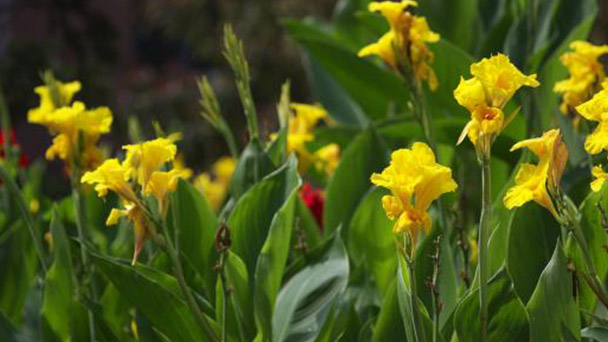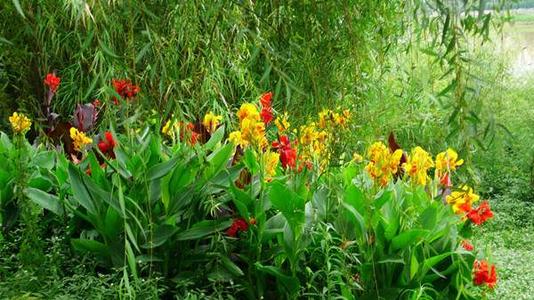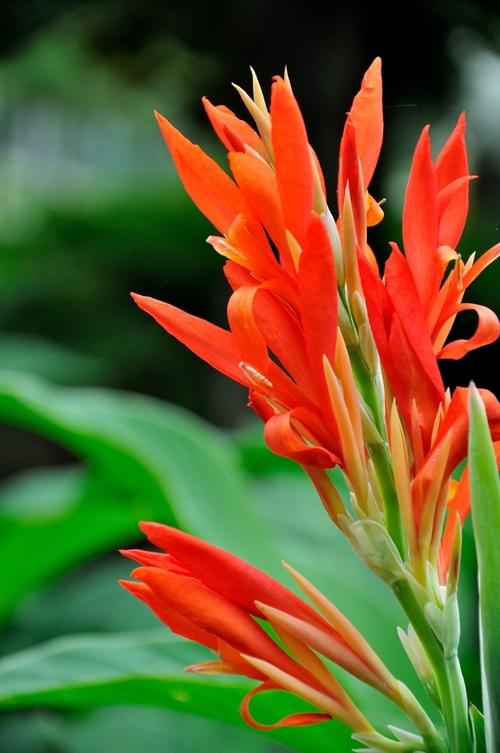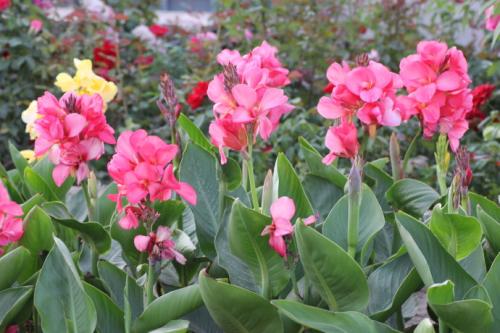How to grow Canna generalis
Written by Maggie
Nov 12 2020

Canna generalis, a perennial herb, with round petioles, green or purple-red; stems and leaves with white powder, broad oval leaves. The flowers are larger, up to 20 cm in size, with straight petals, and the colors are milky white, yellow, orange, pink, red to purple. It is a horticultural hybrid and is commonly cultivated throughout China. Today, let’s learn what Canna generalis measures for growing flowers.
Canna generalis picture

Canna generalis conservation measures
Canna generalis likes a sunny and warm climate, and is not cold resistant. It requires fertile, deep, moist, and well-drained sandy loam. It can grow all year round in the south without a dormant period. In the area north of the Yangtze River, the stems and leaves withered after the frost. At this time, you can cut off the ground up to the ground first, then dig out the rhizomes, dry them for a few days, and then bury them in dry sand and store them in a cold room at 5~7℃ for overwintering. The stacking should not be too thick, with a degree of 20-25 cm.
Due to the tall canna generalis plants, adequate water supply should be provided during the growth period. But it is afraid of waterlogging, and the soil is easy to rot. Therefore, the plant should choose a place that is sunny and sheltered from wind and has good drainage. Because of its vigorous growth and the root system can reach about 70 cm deep in the soil, deep soil and fertile soil are important conditions to ensure its good growth and development. Canna generalis has a large flower, a long flowering period, and requires a lot of nutrients. Reasonable fertilization is the main measure to grow this flower. Regardless of whether it is planted in ground or pot, it is necessary to apply sufficient nitrogen and phosphorus combined organic fertilizer as base fertilizer before planting.
Canna generalis requires several topdressing compound liquid fertilizers during growth and flowering. After each fertilization, water and loosen the soil in time to make the soil loose, so that the root system of Canna generalis can develop, so that it has many flowers and lush branches and leaves. If there is insufficient fertilizer or lack of phosphorus and potassium fertilizers, the plants will become weak, with only stems and leaves, and little or no flowering. After each flower fades, it is necessary to cut off the remaining flower stalks and apply liquid fertilizer in time to ensure the nutrients needed for re-flowering.

Expanding knowledge-the value and culture of Canna generalis
The value of Canna generalis
1. Garden
Canna generalis has emerald green leaves and gorgeous flowers. The colors of Canna generalis are milky white, light yellow, orange, pink, scarlet, purple and sprinkled gold, etc. It is suitable for flower background or planting in the center of flower beds, or it can be planted in clusters or bands in forests. Edge, grass edge. Dwarf species can be potted or used as ground cover plants on sunny slopes. Canna generalis is widely used in road greening, community greening, factories, parks and other places in landscaping. The greening effect is obvious and the speed is fast.
2. Environment
Canna generalis can not only beautify people's lives, but also absorb harmful substances such as sulfur dioxide, hydrogen chloride, and carbon dioxide. It has good resistance. Although the leaves are vulnerable, they re-grow new leaves and quickly resume growth. Because the leaves of Canna generalis are vulnerable and sensitive, they are called live monitors for monitoring harmful gas pollution. It has the function of purifying the air and protecting the environment. It is an ideal flower for greening, beautifying and purifying the environment.

The culture of Canna generalis
Flower language of Canna generalis: a solid future.
According to Buddhism, Canna generalis is made of blood from the toes of the Buddha. It is a large flower. Canna generalis blooming in the sun and hot weather makes people feel its strong will to exist.
Latest Updated
- Benefits of Bugleweed - 7 Science-backed Health Benefits
- Bugleweed Dangers & Side Effects - Is It Poisonous?
- How to Plant Evergreen Trees - What You Should Know
- When to Plant Evergreens - Grow Guide for Evergreen Trees
- 12 Wonderful Evergreen Shrubs for Your Garden
- 12 Popular Evergreen Plants with Pictures for Beginners
- When And How To Prune A Lilac Bush Like a Pro
- How to Grow & Care for Lilac Vine (Hardenbergia Violacea)
- Japanese Lilac Tree (Syringa Reticulata) Care & Propagation Guide
- Shumard Oak Pros and Cons - What to Know
Popular Articles
- Winter maintenance of Antirrhinum Majus
- How to Grow Terminalia Mantaly Tree
- How to Grow and Care for Crossostephium Chinense
- How to grow Antirrhinum Majus in spring
- Peristeria Elata (Dove Orchid) Profile: Info & Care Guide
- Underwatered Snake Plant (Sansevieria Trifasciata) - Signs And How To Fix
- How to Care for Brazilian Jasmine Plant (Mandevilla Sanderi)
- How to Grow & Care for Graptopetalum Purple Delight in Summer
- Rosa Chinensis (China Rose): Plant Growing & Care Tips
- How to Care for Baby Sun Rose (Aptenia Cordifolia)